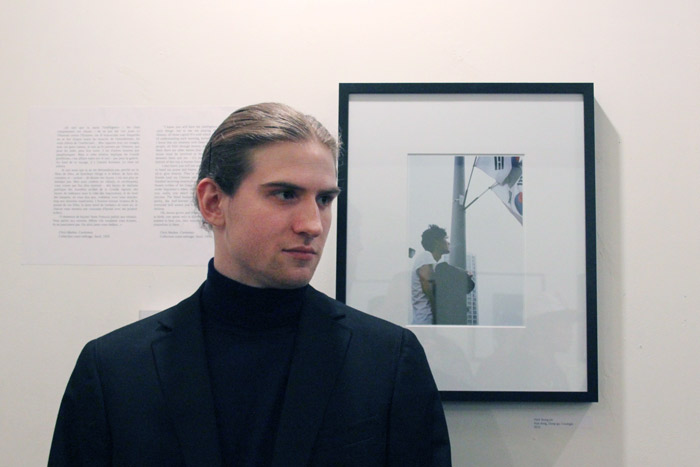[metaslider id=50150]
Seoul may be far away—yet through “Seoul, c’est loin,” you will be closer than ever to the inimitable Korean city. Photographer Jules Tomi, U3 Sociology, allows viewers to travel all the way across the ocean with his photos that capture the beauty of what may be an unfamiliar terrain to some. This all started with a photography book, a film camera, and a passion for Korean culture.
When he was 14, Tomi’s mother got him a book of French photographer Robert Doineau’s work and a film camera—enough to encourage him to begin taking pictures of everything. Later on, when taking classes at McGill, he developed an interest in Korea.
“I had been interested in Korea for quite a few years, it started pretty randomly,” Tomi said. “I just started watching movies out of nowhere, and they have a really good cinema, so I just watched a lot of them, and eventually it got me interested in other Korean things, more political and social issues.”
These cultural phenomena are at the heart of the project he is currently presenting at the Glass Door Gallery on St Laurent. The project, composed of seemingly banal photos, are each emotionally touching because of their simplicity. One captivating shot, “fatigue 1,” simply shows a man asleep in public. Nothing is out of the ordinary, yet it is a moving shot.
“I spent two months [in Korea] and so I brought two cameras, twenty rolls of film, not really knowing what I would be doing in the end,” Tomi explained. “So I just started taking pictures randomly, as I do here, just walking for hours in cities taking pictures and eventually, I sort of felt like I knew where I was going.”
Tomi is trying to turn the everyday scenes he witnessed in Korea into artistic representations of the lived experiences of his subjects. For instance, Tomi explored the problem of seniors in poverty, explaining that old women are often forced to sell vegetables and other wares on the street to sustain themselves and when they are not financially supported by their families.
“You don’t really realize what they represent, they’re just cute ladies selling vegetables on the street,” Tomi said. “But for me, with that knowledge and that background when I saw those people, […] I was able to understand what it meant on a larger scale.”
When viewing many of the portraits, after discovering even just a little part of Korea’s social issues—such as impoverished senior citizens—the expressions of the subjects appear more poignant.
“This is the type of photography that simply depicts the social reality of random people in the city, and since I study sociology, [I quickly] saw a connection between my interest in photography and my studies,” Tomi said.
This link between the studies Tomi is pursuing at McGill and his photos is what makes the entire project so attractive. Through this exhibit he is not only expressing his artistic ideas of what is beautiful, but also his understanding of social experiences.
“Some people write books [to express their thoughts] and I take photos,” Tomi said.









